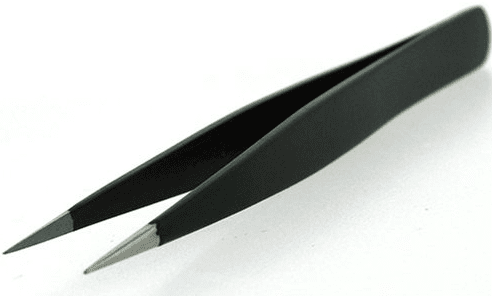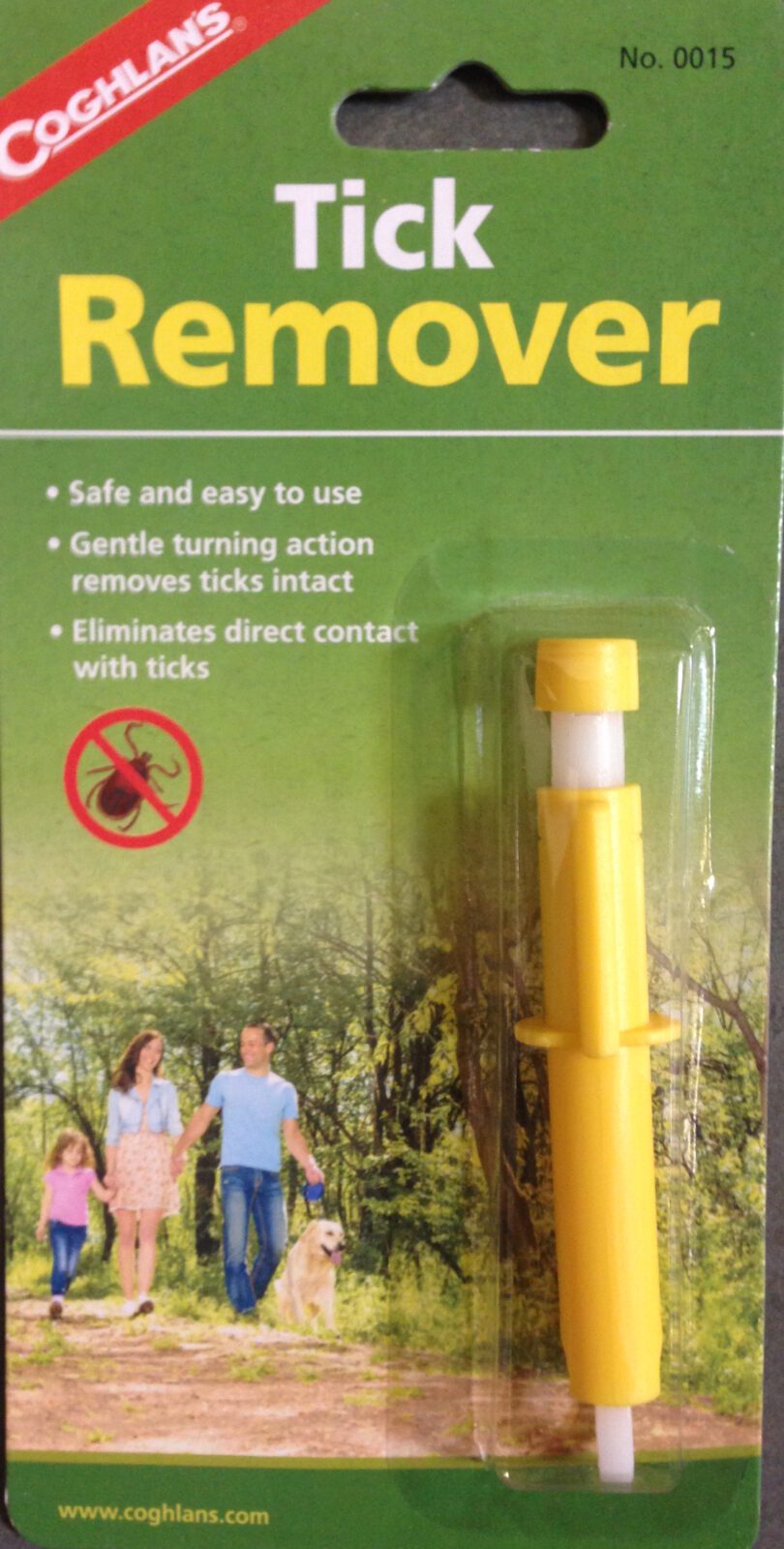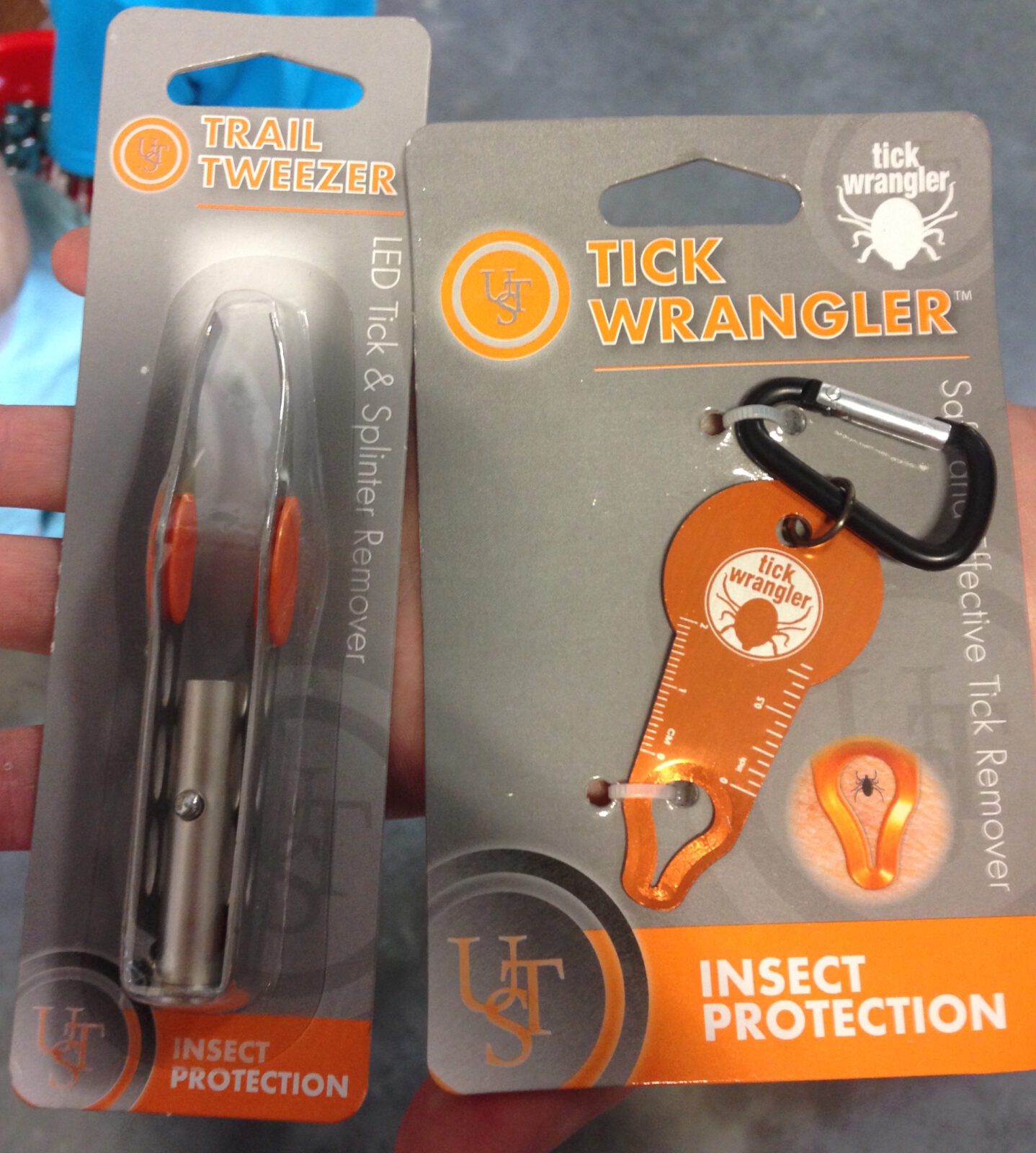So, you have an small animal that attached itself to you. It is parasitic, can transmit disease to you, and is always hungry. No, we’re not talking about your kids. We’re talking about Ticks. Now what do you do?
Though you should remain calm, it is important to remove the Tick as soon as possible. It is commonly reported that ticks do not transmit disease if removed within a certain time frame (like within 24-48 hours), but that turns out to not be an absolute truth (see this scholarly article, that suggests that ticks can infect you as soon as they embed: duration-of-tick-attachment-as-a-predictor-of-lyme-disease). Though it is certainly possible that ticks can infect you as soon as they embed, the evidence also suggests that your probability to be infected is statistically smaller the sooner the tick is removed.
Now that you’re calm, it’s time to get to brass tacks: How are you going to get this sucker out of you? That’s a heck of a question.
Before talking about specific tools, lets discuss the general principles and debunk some myths at the same time. First, don’t use any anecdotal methods. You know the ones I’m talking about: Using nail polish, a match, petroleum jelly, or your uncle Frank’s mustache. I know what you’re thinking, I even know what accent you’re thinking in! “I saw my cousin Jesse use a match, and he done did got the tick out, and he never got no Lyme Disease!” Remember that a stopped clock is right twice a day, and that people are ‘cured’ by placebo pills. Though it may work in an individual circumstance, it is not advisable to ALL people EVERYWHERE. Whew. I’m glad we got that over with.
The idea is to get the tick completely out of your skin, without leaving any tick mouthparts behind. It would be helpful if you did it without setting fire to your skin with a match, or touching your skin to you’re uncle’s mustache (isn’t it REALLY a squirrel disguised as a mustache? Who knows? Science has largely been silent on the topic). Furthermore, distressing the tick by alternative methods could cause the regurgitation of infected blood and saliva into your body!
The best way to remove a tick is with a pair of tweezers. The type that most folks tend to have in their houses are broad tipped tweezers:

But the best way is with tweezers with a fine tip:

The reason behind the fine tipped tweezers is that they simply are smaller and can more precisely grip smaller things, like a tick.
There are many different alternative commercial devices out there. Here is a few that I found in a local Boise area sporting goods store:




These different products vary in effectiveness, but some valuable information can be found in an interesting Wall Street Journal article that cited some scholarly testing on the different tick removal products here: https://www.wsj.com/articles/can-tick-removal-tools-top-tweezers-1437414033
For arguments sake, lets just stick with the fine tipped tweezers. Take the tweezers and grip the tick as close to the skin as possible, just where the mouthparts come out of your skin. Grip firmly, but do not crush the tick, as that could cause infected materials (blood, saliva,etc.) to infect the bite wound.
Simply pull up with firm and consistent pressure until the tick comes out of the skin. Here is a great video example on the amount of pressure required: How to properly remove a tick
All of this is best-case scenario. What happens if the tick is crushed? What happens if you don’t get all of the mouthparts out?
First, wash your hands with soap and water, and use hand sanitizer. Next, remove any tick parts from your skin with sterilized needle or tweezer, in the same way you would a splinter. Clean the bite wound with soap and water, and similarly sanitize the wound with alcohol or other antiseptic. As always, it is wise to consult a physician.
There is some varying opinions on what to do with an extracted tick. Some say to keep the tick in a plastic ziplock bag in case you need to test the tick for disease, while others (The Vermont Department of Health, at the bottom of their tick pamphlet, it gives several reasons why you shouldn’t, including “You may not have been infected. Even if a tick tests positive, it may not have been attached long enough to transmit the infection to you”) suggest destroying the ticks: what-you-should-know-about-lyme-disease
If you go the ‘destroying’ route, here are a few ideas:
- Flush the tick down the toilet
- Place the tick in alcohol
- Fold the tick into tape, then dispose of it in the trash
Regardless of what you do with the tick, consult a physician. Observe the bite wound over the next few weeks, and report any suspicious activity to your Doctor.
For a quick review of how to remove a tick, check out our 90 second youtube video:
What is the best way to remove a tick?

